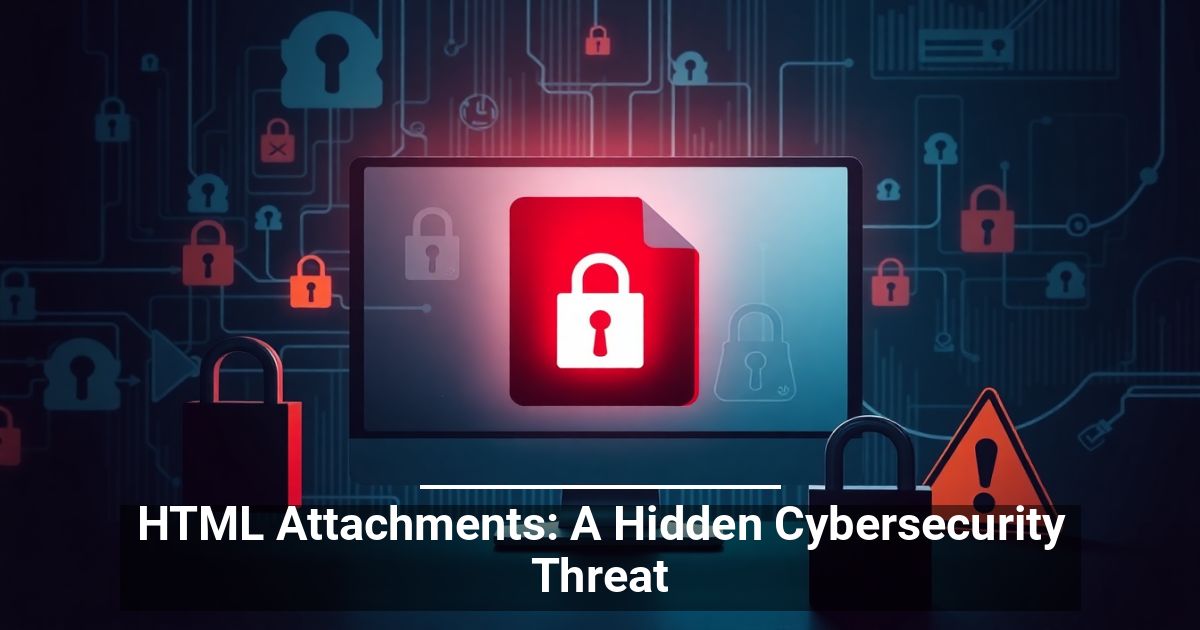 Are your company’s emails a backdoor for hackers? Cybercriminals are getting increasingly creative, and HTML attachments are their new favorite tool. Learn more about this risk below.
Are your company’s emails a backdoor for hackers? Cybercriminals are getting increasingly creative, and HTML attachments are their new favorite tool. Learn more about this risk below.
The Emerging Threat of File-Based Phishing: What You Need to Know
Cybercrime no longer lurks just in dark alleys — it now infiltrates inboxes and file attachments. Every day, hackers aim to breach businesses, steal data, and cause operational chaos.
A particular threat on the rise? Malicious HTML attachments. These common web-based files are designed to display information but can be weaponized by cybercriminals to carry hidden scripts or phishing links. Once opened, they can quietly harvest credentials or launch malware attacks.
The Real Risk Behind Innocent-Looking Files
According to recent research by Barracuda, nearly 1 in 4 HTML attachments contains malicious code, making them the most dangerous file type in circulation.
Surprisingly, while PDFs remain the most frequently shared file format, they’re significantly less risky — only 0.13% were found to be malicious. However, that doesn’t mean you can let your guard down, as more PDFs are being used to trick users with embedded deceptive links.
Smart Ways to Protect Your Business From HTML-Based Attacks
A successful phishing attack can lead to data leaks, lost productivity, reputational damage, and costly downtime. Here’s how to reduce your risk when dealing with HTML attachments in email:
1. Foster a Culture of Cyber Awareness
The weakest link in most breaches is human error. One employee clicking the wrong link is often all it takes. That’s why regular, practical training is essential. Equip your team to:
- Recognize suspicious behavior in emails (look for poor grammar, vague messaging, or urgent demands)
- Double-check sender information before opening files
- Avoid clicking unknown links or downloading unsolicited attachments
- Report anything unusual to your IT or security team promptly
2. Enforce Strong Access and Authentication Policies
Keep account credentials confidential and unique — even among coworkers. Encourage the use of strong passwords (10+ characters, mixed case, numbers, and symbols) and, where possible, enable multi-factor authentication (MFA).
If attackers do gain access, these precautions can prevent them from freely moving through your systems.
3. Deploy Advanced Email Protection Tools
Even cautious employees can slip up. That’s why robust email security is a critical second line of defense.
Modern email filtering solutions use machine learning and threat intelligence to detect malicious links, scripts, or code hidden in HTML files. Many tools scan attachments before they reach your inbox, giving you an added layer of protection from emerging threats.
Don’t Let Malicious Emails Derail Your Business
Email remains a primary channel for business communication — and cybercriminals are counting on that. Barracuda’s findings show that while HTML attachments aren’t the most common file type, they account for the majority of malicious detections.
Are you confident your cybersecurity measures can handle this rising threat? If not, now is the time to review and strengthen your defenses. A little vigilance and the right tools could be the difference between business as usual and a costly breach.
🔒 Ready to take your email security to the next level?
Contact our team today at 408-369-4300 or email us at sales@corpwest.com to schedule a free cybersecurity consultation. We'll help you assess your current risk level and recommend smart, scalable solutions to protect your inbox — and your bottom line.


